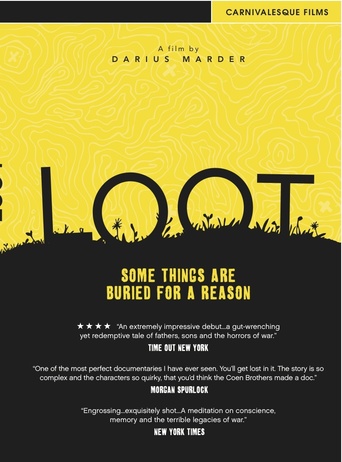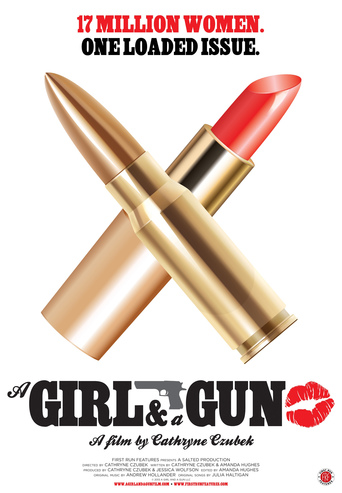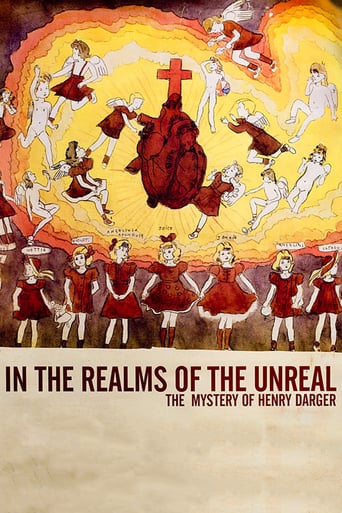The Rape of Europa (2007)
World War II was not just the most destructive conflict in humanity, it was also the greatest theft in history: lives, families, communities, property, culture and heritage were all stolen. The story of Nazi Germany's plundering of Europe's great works of art during World War II and Allied efforts to minimize the damage.
Watch Trailer
Cast


Similar titles
Reviews
Good movie but grossly overrated
Although it has its amusing moments, in eneral the plot does not convince.
Story: It's very simple but honestly that is fine.
By the time the dramatic fireworks start popping off, each one feels earned.
After watching George Clooney's Monument Men in the movie theater, I decided to revisit the documentary "The Rape of Europe" as it had been quite a few years since I saw it , I found it on DVD in the public library.The documentary is much more informative and I think more fascinating than the movie. It is also much more thought provoking. Unfortunately it seems like art is more important than humans. Beside some Egyptian mummies or Neanderthalers there is no price tag attached to a human being (well, of course insurance agencies and divorce lawyers attach price tags), while pieces of art seem to get astronomic prices the longer they survive. And while human trafficking is a huge and booming business, the individual human being sold does not bring the same money as a piece of good art brings. But if a Klimt belongs in a museum or makes the grandchildren of the painter's model multi-multi-millionaires was not the big question I was asking myself after viewing this documentary again.What really stuck in my mind was one question raised by one art professor: What if the Viennese art school would have admitted Hitler? Would that have changed the world as we know it today? I am tempted to say yes. One little decision altered or ended the lives of millions of people and destroyed multiple countries.Hitler would have concentrated his energies on becoming a successful artist, maybe he would have learned to appreciate modern art with the proper training It is frightening to think that one small little thing like a decision of an admission committee could have changed the world....Though it seems so difficult to me today to understand the charisma of Hitler , it is also difficult for me to understand that G.W. Bush got elected twice, that the Kardashians are so popular and that we fall for advertising. One can only understand what happens in the context of the time when it happened. . .
This is a good movie and it is biased. It is trying to tie the looting of art to holocaust. That is very wrong. Nazi ideology was wrong, inhumane and evil. Nazis took anything they wanted because they believed they owned Europe. Hitler was not a bad painter; he was against modern art. I have been painting for 39 years and I can assure you he is much better than many artists who are accepted into art schools at the time and today as well as some my students. His art is very much illustrative not lyric in the sense of story telling. In a few of his work that I have seen he has hold perspective and dimension well in place more than I can about a lot of paintings that are in the museums. He loved art and his vision was that he owns Europe and Germans are master race so he is going to take it all and make a very large museum. The reference of Hitler became anti-Semitic because he was rejected at art school is just childish. Hitler became anti-Semitic mainly because he believed Jews are responsible for Germany's defeat in WWI. He formed his Anti-Semitism in later years after his rejection and there is no reference of such in Mein Kampf, (one of the most $%^&ed up books I have ever read in regards to editing and scatter of subject in 4 languages including German). Holocaust was horrible; so was the loss of 23.5 million people of USSR. It also tried to portray USSR soldiers as looters by taking the art back. The efforts of people like Leonid Folinsky, the Soviet artist that discovered the Raphael's Madonna and Rembrandts, Rubens, etc. in salt mines in east Germany area and managed to pull them out of the water is not mentioned other than they were sent to loot for USSR. It ignored the fact that if Nazi's took and destroyed so much of USSR's art then if after the war USSR keeps some of the German art it is just a payment. It almost implies that Hitler's atrocities should be wiped off with the end of Nazi party and Germans should not have to pay any damage into the equation. Obviously every Jewish art dealer descendant (or Holocaust victim) should get all his or her art back. Obviously it helps the fact that as soon as they get it back they can sell it to likely end up in an American museum. . What about the descendants of the art in USSR? While I appreciate the efforts of Americans who did the saving of the artifacts I do not think they were the only ones. Many natives of France, Holland, Austria and other countries helped the underground networks with efforts to save the artifacts and their efforts were downed a little with exception of one. The use of some new footage of the WWII is refreshing. I did not see much reference to the art in Holland or Belgium. I dislike the title of the movie as "Rape of Europe" as a Nazi "thing". Napoleon did nice job of raping the Europe himself; where do you think all the Italian and Spanish art in Louvers comes from? How about rape of Egypt, Persia, Greece, ... England obviously did not rape India or any of its sub kingdoms! What about rape of Iraq as recent as 2003? 58 years after WWII! I think they were on the level about the bombing of Monte casino but the firebombing of Dresden was played down a lot, considering the loss of the art there.War is a horrible part of human history and taking booty has always been a part of it. Nazi ideology was wrong, inhumane and evil but taking art works and valuables was not their invention. The part that talks about how they had lists of artwork upfront and before hand due to their "evil" minds... That is just the naive talk of the talker. Germans are born with a list of to do's. Anybody that has spent a little time learning German and their people would know it. Everything is always calculated and documented! They even documented the holocaust themselves with very extreme precise records.
This is another fascinating look at the devastation of everything that happened during WWII. This is a little known fact about the systematic way the Nazis stole everything & didn't think about any of the actual consequences of their own greed. I am the 1st to admit that I really know nothing about art and can't "Get it." I cannot understand the Van Gogh's or the Renoir's as much as I'd like to. I understand and like history & that is what I understand and appreciate just like movies & know a interesting story despite the topic if it is presented well. Just like understanding math, Art is in the same league, you either understand it/and or can do it, or you can't. It's not something you can really teach, just ask the failed artist Hitler. Just as this film suggests what if he had gotten into the art school? Would he have been the monster he became? Very doubtful & it explains his love/hate relationship w/the subject. Even if you can't understand why a painting sells for 5 million or 100 million (like I can't) this is still an interesting study.
This film tells about the policy of the Nazis toward the art and culture of various countries they occupied.It tells that Hitler and especially Goring were personally interested in great works of art. They took it from the countries they conquered and from individual art collections. There is also a quick look at some art work done by Hitler himself when he was an art student and aspiring artist.The picture shows what steps countries took to protect their art work from the Nazis. Museums in France, Russia, Italy and other countries crated and shipped their art work to hiding places, a huge job as statues like Michelangelo's David and the Winged Victory from the Louvre any many others were protected and put into crates.In the process we get to see a quick peek at some great art work from the Louvre, the Hermitage, Florence,and other places. If you are interested in the history of this time, this is an interesting documentary with some interesting art to see.















